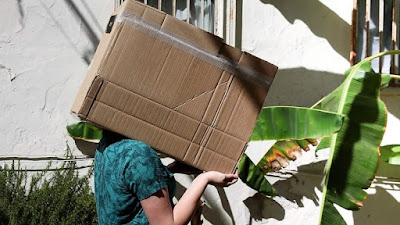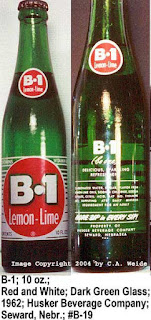In this blog I have written a couple of articles about finding things on campus:
1)
Concordia College Freshman Beanie Caps, about finding beanies under the football stadium's bleachers. This is by far the most popular article in this blog -- it has received more than a quarter-million hits.
2)
Finding and Redeeming Empty Bottles of Husker Pop, about finding empty pop bottles under the campus's bushes. I published this article yesterday.
Today -- prompted by yesterday's death of Hugh Hefner -- I am publishing this article about finding
Playboy magazines on the campus of Concordia College, an educational institution that taught future Lutheran pastors and parochial-school teachers.
This event happened in about June 1964, the last year when my family lived on Faculty Lane. Later that summer, we moved out to North Columbia Avenue, farther from the campus. I was 11 years old.
Here is the cover of the issue dated
February 1964.
Here is the cover of the issue dated
May 1964.
Eleven-year-old Lutheran faculty-kid boys at Concordia College had few opportunities to look inside
Playboy magazines in 1964. I never saw the magazine for sale in Seward, but I saw it in book stores in Lincoln. My family shopped in Lincoln for school clothes and for Christmas presents, so I saw the magazine in a book store there once or twice a year. I saw only the magazine covers, because each magazine was wrapped in plastic.
Playboy magazine was famous and rather unique in 1964. The first real competitor was
Penthouse, which was founded in the United Kingdom in 1965 but did not go on sale in the USA until 1969.
A few
Playboy magazines did occasionally get into the Lutheran schoolboy hands. Seward had a public school that was attended by immoral families, and those families had immoral fathers and immoral older brothers who occasionally bought
Playboy magazines in Lincoln. Eventually some of those magazines were given to or stolen by immoral younger brothers. Because Seward was a small town where public-school and parochial-school boys knew each other, some of those
Playboy magazines eventually fell into the hands of Lutheran schoolboys. That's how I imagine that much of the circulation of
Playboy magazine among boys happened in Seward.
I was a close friend of John Garmatz, and I happened to meet him often when we were delivering newspapers in the mornings. On a few such occasions, he had a
Playboy magazine and showed it to me. John and I were most interested in looking at, however, the magazine's Little Annie Fanny cartoons than at the naked women.
John and I shared a passion for
Mad Magazine because it was full of funny cartoons. We both subscribed to
Mad and bought and shared many of its cartoon books.
We were interested in looking at
Playboy's naked women, but we were only around 11-13 years old, and those women were around 20 years old. I could not really imagine a plausible sexual fantasy with such old and large women. Whenever I ever enjoyed sexual fantasies, they were about more age-appropriate girls -- who likewise were about 11-13 years old.
======
One day in about 1964, one of my classmates invited me to go with him to look in the dumpsters behind the men's dormitory northeast of the football field. I don't remember the dormitory's name. I do remember my classmate's name, but I will keep it secret here.
This was a good day to look in the dumpsters, because the college's school year had just ended and practically all the students had just departed. Even before we looked in the dumpster, my schoolmate knew what we would find, because he had looked in previous years.
We found some
Playboy magazines! My classmate and I divvied them up. I don't remember exactly how many were in my share, but maybe about four. I took them home and studied them during the following days. Then I threw them away, because I was terrified that my Mom would find them.
It was exciting to be able to study such forbidden material, but my sexual arousal was limited. For an eleven-year-old boy, the sight of a 20-year-old naked woman was monstrous. It was difficult for me to fantasize what I might do with such a large naked woman even if I had the opportunity.
I promised myself to return to the dumpster in the following years. However, since we had moved out to North Columbia, doing so was no longer so convenient. Keep in mind that there was only a few days when I could have found the
Playboy magazines -- after the departing men cleaned out their dormitory rooms and before the dumpsters were emptied into the garbage trucks.
=====
I don't have any memory of seeing
Playboy or any other pornography during my Seward years. In those days and in that place, we grew up without seeing pornographic pictures.
There was a period, when I was in about seventh grade, when I would go to the college library's children section and read the books about puberty. Those books -- maybe three books -- would describe sexual intercourse briefly in a straight-forward manner, without illustrations. Reading those passages aroused me, and so I went back to the library and read those passages many times.
Also, St. John Elementary School had a subscription to
National Geographic, which sometimes had articles illustrated with photographs of primitive tribes where the women went topless. When our class went down to the library for a period, we boys always would look at the current
National Geographic, and on a few, rare occasions we did find such photographs. I don't count that as pornography, however.
=====
I have one other, small memory about
Playboy during my Seward years. When I attended Concordia High School, one building's basement had a small cafeteria for the campus. There were some small tables there, and students from both the high school and the college would sit there and talk. This was before the campus had a student center.
Anyway, one day I came into this cafeteria, and I heard a college guy sitting at a table with a couple of college girls, and he was telling them about
Playboy magazine. I was astonished to hear him tell them without any embarrassment that he read
Playboy all the time. He explained that the magazine had a lot of interesting articles. Of course, these two Concordia College were outraged and scoffed at his interesting-articles justification. They accused him of getting the magazine just so he could look at pictures of naked women.
I understood the girls' reaction, but since I myself had been able to study a few
Playboy magazines, I knew that he was right about the magazine having interesting articles too.






























